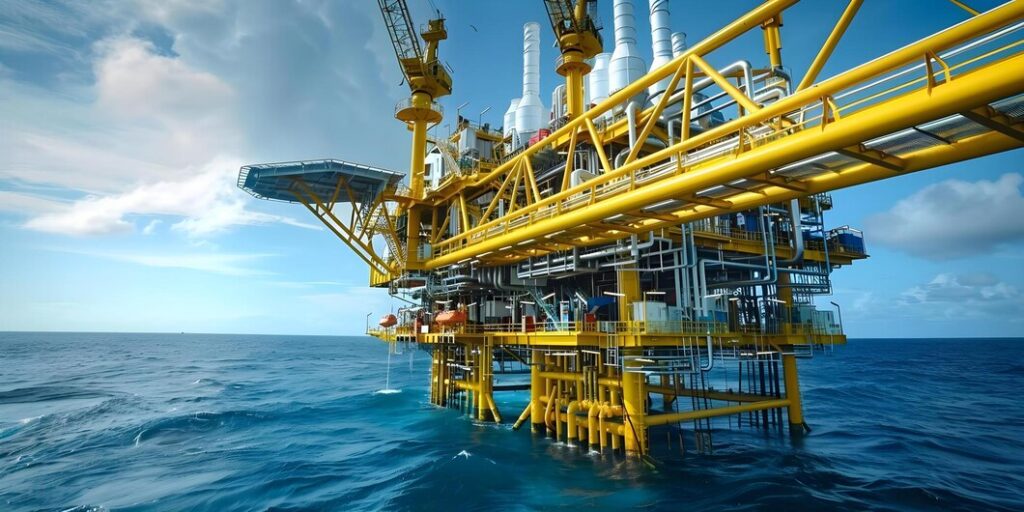Deep offshore technology represents one of the most formidable achievements in modern engineering, enabling the extraction of oil and gas from the ocean’s most challenging and remote areas. As global energy demands grow and accessible resources become scarcer, the need for innovative methods to exploit underwater reserves has intensified. This article explores the cutting-edge systems and methodologies employed in deep offshore technology, highlighting the advancements that have made it possible to operate in increasingly inaccessible underwater depths.
Introduction to Deep Offshore Technology
Deep offshore technology refers to the complex systems and techniques used to explore, drill, and extract hydrocarbons from beneath the seabed in deep and ultra-deepwater environments. These environments, typically defined as being deeper than 1,500 meters (5,000 feet) underwater, pose significant engineering challenges due to extreme pressures, low temperatures, and the sheer scale of the operations involved.
Historical Context and Evolution
Early Offshore Exploration
The history of offshore drilling dates back to the early 20th century when the first shallow water wells were drilled using rudimentary equipment. As technological advancements progressed, the industry gradually expanded into deeper waters. The 1970s marked a turning point with the development of the first semi-submersible drilling rigs, which could operate in deeper waters compared to their predecessors.
The Rise of Deepwater Drilling
The 1990s and 2000s witnessed significant breakthroughs in deepwater drilling technology. Innovations such as dynamic positioning systems and advanced riser systems enabled drilling in depths previously deemed unreachable. The discovery of major oil fields in deepwater regions, such as the Gulf of Mexico and offshore Brazil, spurred further investment and research into deep offshore technologies.
Key Technologies in Deep Offshore Operations
Floating Production Systems
Floating Production Storage and Offloading (FPSO) Units
FPSOs are floating vessels used for the production, storage, and offloading of oil and gas. These units are equipped with processing facilities and storage tanks, allowing them to operate independently in remote locations. FPSOs can be anchored to the seabed using various mooring systems, including spread mooring and turret mooring, depending on the environmental conditions.
Semi-Submersibles
Semi-submersible platforms are floating structures supported by columns that are partially submerged in water. Their design minimizes the impact of wave motion, making them suitable for deepwater operations. These platforms are often used for drilling and production activities and can be dynamically positioned to maintain stability.
Tension Leg Platforms (TLPs)
TLPs are anchored to the seabed by vertical tendons that are kept under tension. This design provides stability and minimizes vertical motion, making TLPs ideal for deepwater drilling and production. They are particularly effective in regions with challenging sea conditions.
Drilling Technology
Blowout Preventers (BOPs)
BOPs are critical safety devices used to control well pressure and prevent blowouts during drilling operations. In deepwater environments, BOPs must withstand extreme pressures and temperatures. Modern BOPs are equipped with multiple seals and redundant systems to ensure reliability.
Riser Systems
Risers are pipes that connect the seabed to the surface vessel, allowing the transfer of drilling mud and hydrocarbons. In deepwater drilling, riser systems must be designed to handle high pressures and prevent leakage. Advanced riser technologies include hybrid risers and steel catenary risers.
Managed Pressure Drilling (MPD)
MPD is a technique used to control wellbore pressure more precisely during drilling operations. This method helps mitigate the risks of kicks and blowouts by maintaining optimal pressure levels. MPD systems include technologies such as constant bottom hole pressure and rotating control devices.
Challenges and Solutions
Extreme Environmental Conditions
Pressure and Temperature
The extreme pressures and low temperatures at deepwater depths pose significant challenges for equipment and materials. Special alloys and advanced materials are used to withstand these conditions, and thermal insulation is employed to protect sensitive components.
Subsea Currents and Weather
Subsea currents and adverse weather conditions can impact the stability and operation of offshore platforms. Dynamic positioning systems and advanced weather forecasting technologies help mitigate these challenges by allowing for real-time adjustments and monitoring.
Environmental and Safety Concerns
Oil Spill Prevention and Response
Preventing and responding to oil spills is a critical aspect of deep offshore operations. Technologies such as remotely operated vehicles (ROVs) and advanced containment systems are used to detect and address leaks promptly. Additionally, strict regulatory frameworks and safety protocols are in place to minimize environmental impact.
Decommissioning and Environmental Restoration
Decommissioning offshore platforms and restoring the environment once operations cease is a crucial aspect of sustainable development. Techniques such as cutting and removal of subsea structures, as well as environmental monitoring, ensure that the marine ecosystem is protected.
Future Trends and Innovations
Automation and Digitalization
Remote Operated Vehicles (ROVs) and Drones
The use of ROVs and underwater drones has revolutionized deep offshore operations by providing remote access to underwater environments. These devices are used for inspection, maintenance, and intervention tasks, reducing the need for human presence in hazardous conditions.
Artificial Intelligence and Machine Learning
AI and machine learning technologies are increasingly being integrated into offshore operations to enhance data analysis, predictive maintenance, and decision-making. These technologies enable real-time monitoring and optimization of drilling processes, improving efficiency and safety.
Renewable Energy Integration
Hybrid Platforms
The integration of renewable energy sources, such as wind and solar, with traditional offshore platforms is an emerging trend. Hybrid platforms aim to reduce the reliance on fossil fuels and minimize the environmental footprint of offshore operations.
Carbon Capture and Storage (CCS)
CCS technologies are being developed to capture and store carbon dioxide emissions from offshore facilities. This approach helps mitigate the impact of greenhouse gas emissions and supports the transition to a more sustainable energy future.
Conclusion
Deep offshore technology represents a remarkable achievement in engineering and innovation, enabling the extraction of valuable resources from some of the most challenging and remote environments on Earth. The advancements in floating production systems, drilling technology, and subsea infrastructure have made it possible to operate in depths that were once considered inaccessible. As the industry continues to evolve, the integration of automation, digitalization, and renewable energy will play a crucial role in shaping the future of deep offshore operations. The ongoing pursuit of technological excellence and environmental stewardship ensures that deep offshore technology will remain at the forefront of the global energy sector.







